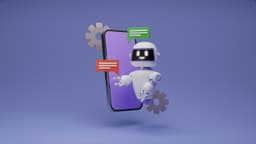How to Plan Product Development
Product development requires creativity, strategy, and attention to detail. For both startups and established companies, planning is key to successful product creation. Here’s a clear guide through the product development process.
Step 1: Gather Your Team
Who makes up your product development team? This group should consist of individuals with various skills, including engineers, designers, marketers, and financial experts. Each member plays a vital role in the product development process.
Best Practices:
- Diverse Expertise: Ensure a mix of technical, creative, and strategic skills.
- Clear Roles: Define roles and responsibilities to prevent overlaps.
- Strong Leadership: Assign a project manager to oversee and coordinate the project.
Step 2: Define the Direction
What is the vision for your product? This phase involves outlining the final product’s features, target audience, and unique selling points.
Best Practices:
- Market Research: Conduct comprehensive research to understand customer needs.
- Competitive Analysis: Analyze competitors to find gaps in the market.
- Clear Vision: Establish a strong product vision and unique value proposition.
Step 3: Document Everything
Why is documentation important? Keeping thorough records is essential throughout the development process. This includes research, ideas, design changes, and customer feedback.
Best Practices:
- Detailed Documentation: Keep records of all decisions and changes.
- Version Control: Utilize systems for tracking design and development changes.
- Accessibility: Make documentation easily available to all team members.
Step 4: Focus on Design
How does product design come together? This stage involves creating a product that is both functional and visually appealing.
Best Practices:
- Collaborative Design: Foster teamwork between designers and engineers.
- User-Centered Design: Prioritize user experience in design choices.
- Prototyping: Create prototypes early and refine them based on feedback.
Step 5: Conduct Testing
Why is testing crucial? Before launching, your product must undergo rigorous testing to ensure it meets customer needs.
Best Practices:
- Comprehensive Testing: Perform usability, performance, and stress tests.
- Beta Testing: Release a beta version to a select audience for feedback.
- Iterative Refinement: Use testing results to make improvements.
Step 6: Marketing Strategy
How do you market your product? Creating awareness is essential for success. Develop marketing campaigns that engage your audience.
Best Practices:
- Targeted Marketing: Focus your marketing efforts on your specific audience.
- Storytelling: Build a compelling narrative around your product.
- Multi-Channel Approach: Utilize various marketing channels to reach a broader audience.
Step 7: Launching the Product
What should you consider for the launch? This is when all your hard work pays off. Prepare carefully for your product's introduction to the market.
Best Practices:
- Launch Planning: Plan logistics and timing thoroughly.
- Customer Support: Establish reliable customer support for initial inquiries.
- Performance Monitoring: Track sales and customer feedback closely.
Step 8: Plan for Future Development
What’s next after the launch? The journey continues beyond the initial release. Keep monitoring the market and customer feedback for future improvements.
Best Practices:
- Continuous Improvement: Regularly gather and implement customer feedback.
- Market Trends: Stay informed on industry trends and technological advancements.
- Long-Term Vision: Outline plans for product updates and new versions.
Product development is an ongoing process filled with creativity and challenges. By maintaining a clear vision and diligent approach, you can transform ideas into successful products.
(Edited on September 4, 2024)












